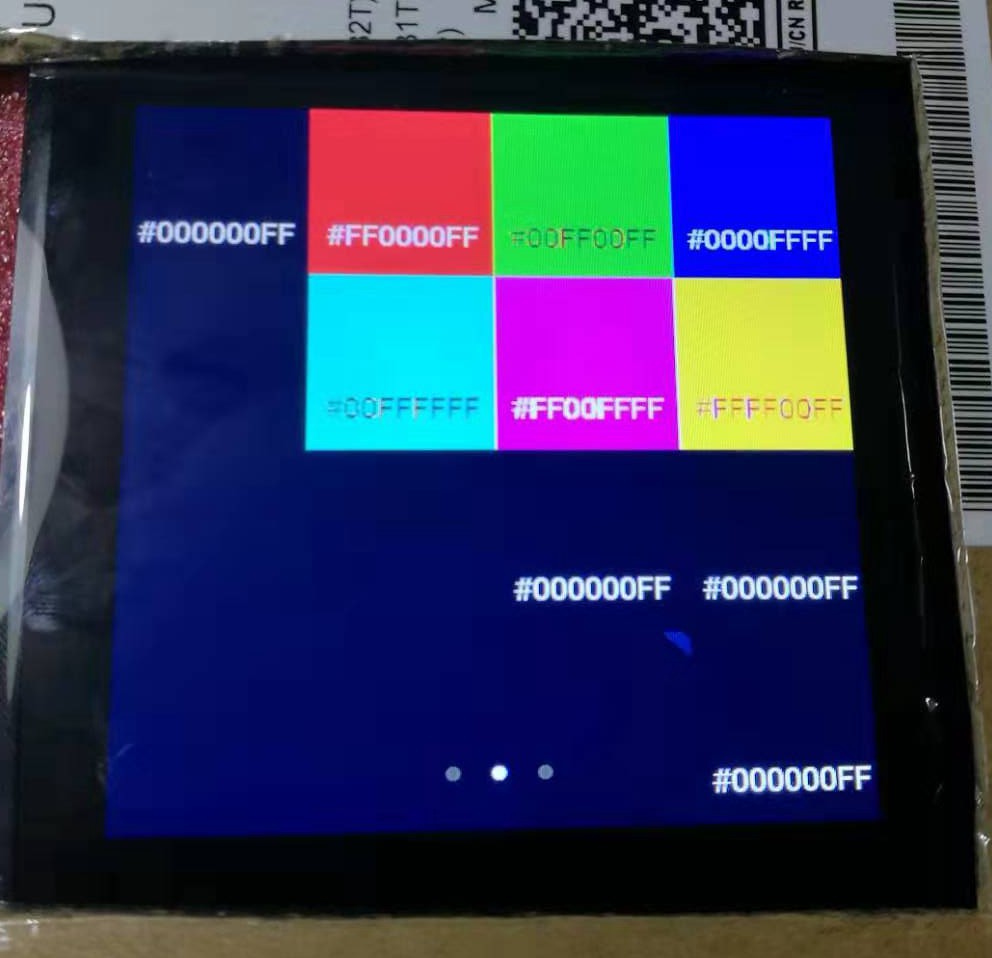Dear sir,
When I transfer our UI page( designed by EW 9.20) to our prototypy hardware board which based on NXP RT1062, I found the black color can't be displayed correctly, it was shown as dark blue on LCD (actually, it is black color in our design).
Some parameters as below:
- PlatformPackage is "NXP.iMX_RT.RGB888"
- DirectAccess for both "FormatOfBitmapResources" and "FormatOfBitmapResources" in Profile Configuration.
After generate code and run it in our prototype board, the black background was shown as dark blue. I can't find the root cause.
In additional, we have further tesing with other colors, red(#FF0000FF), green(#00FF00FF,blue(#0000FFFF) and yellow(#FFFF00FF) can be displayed correctly, only black was displayed as drak blue.
Please see the attached pic. The LCD frame is black for comparison. The picture's background is dark blue, but it is actualy black in UI page design.
The RGB888 color code is marked on each color block. Except for black, all other color blocks can be displayed correctly.

So, please help to analyze what the reason is and how to solve this case.
Thanks a lot.